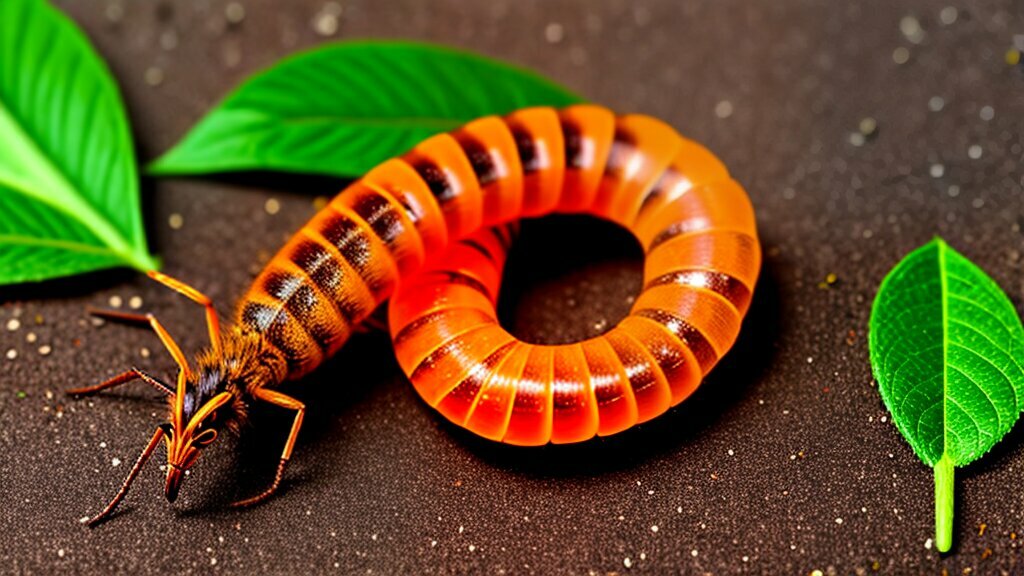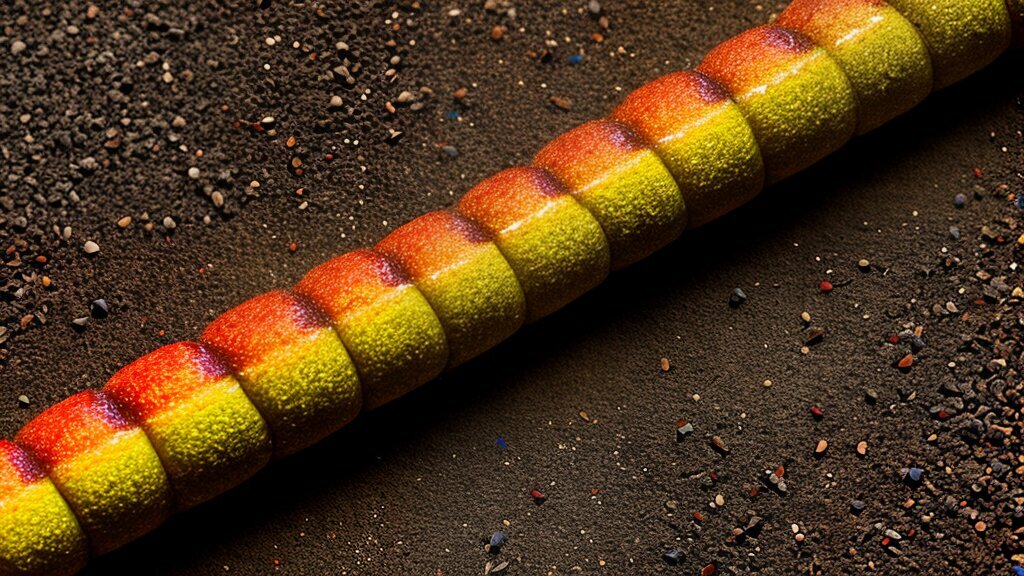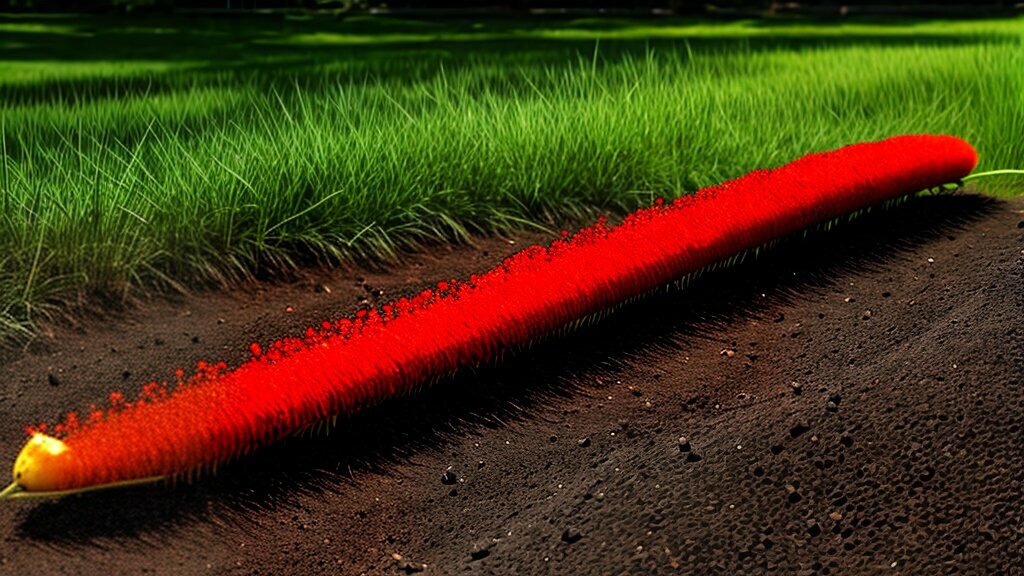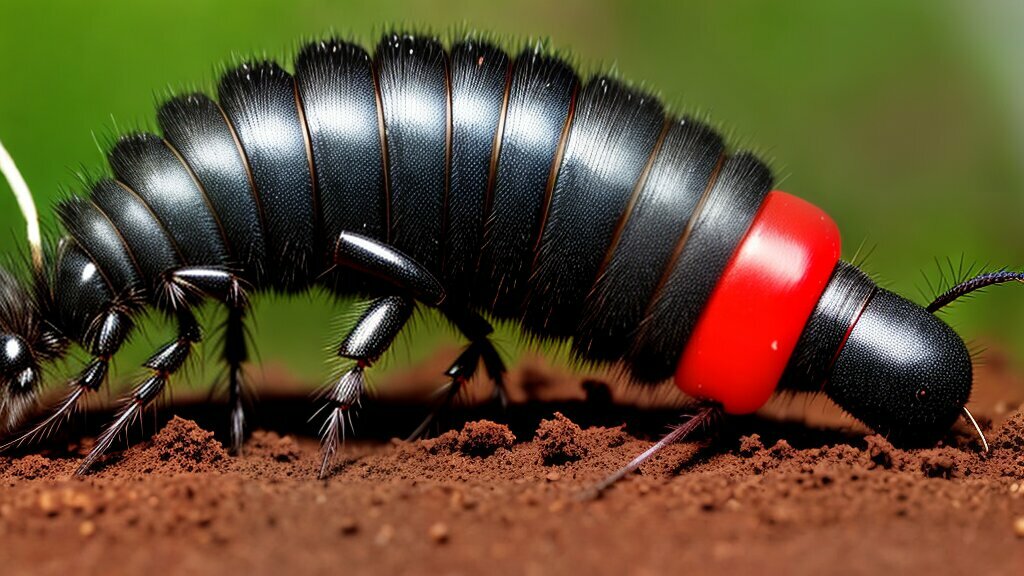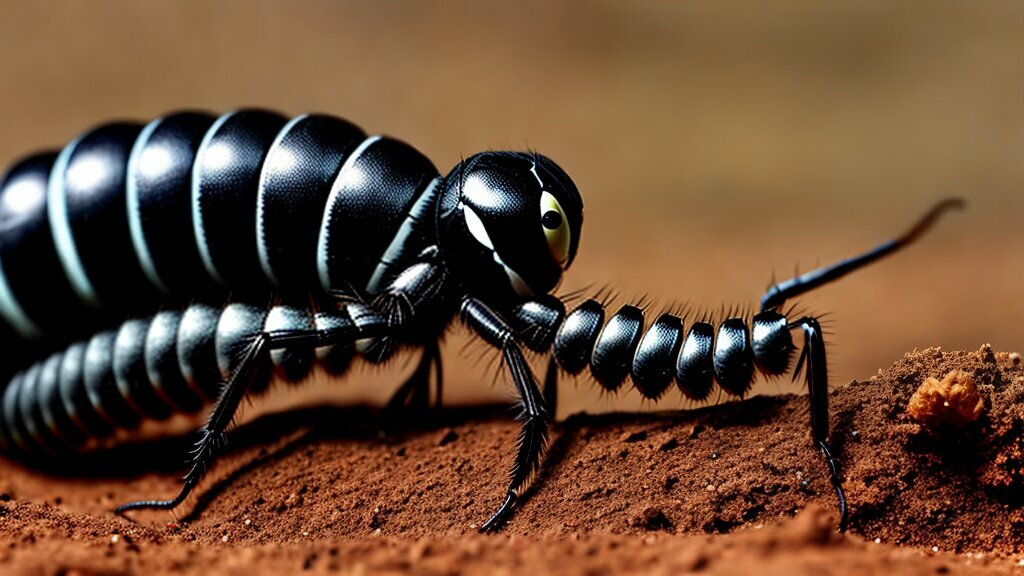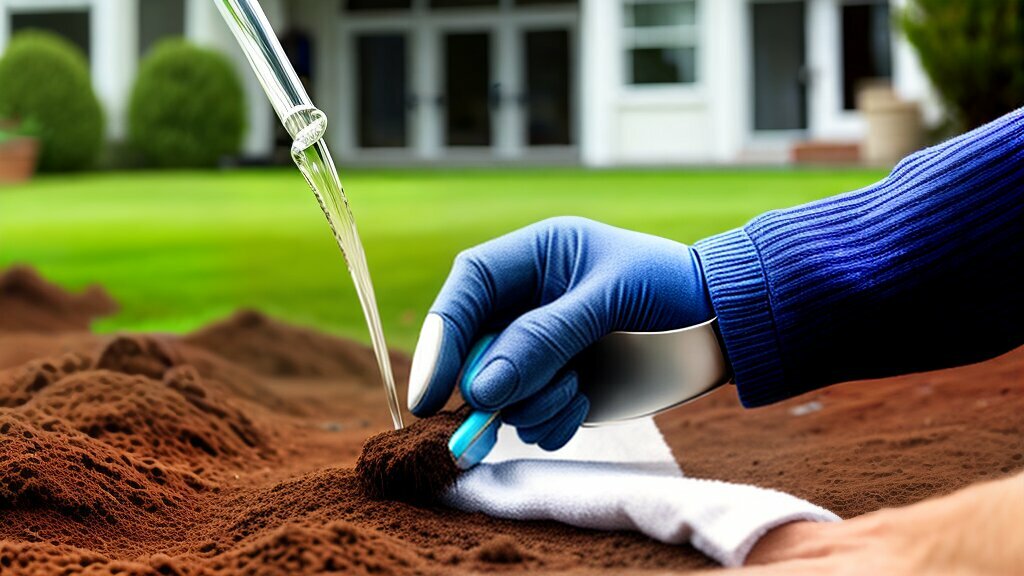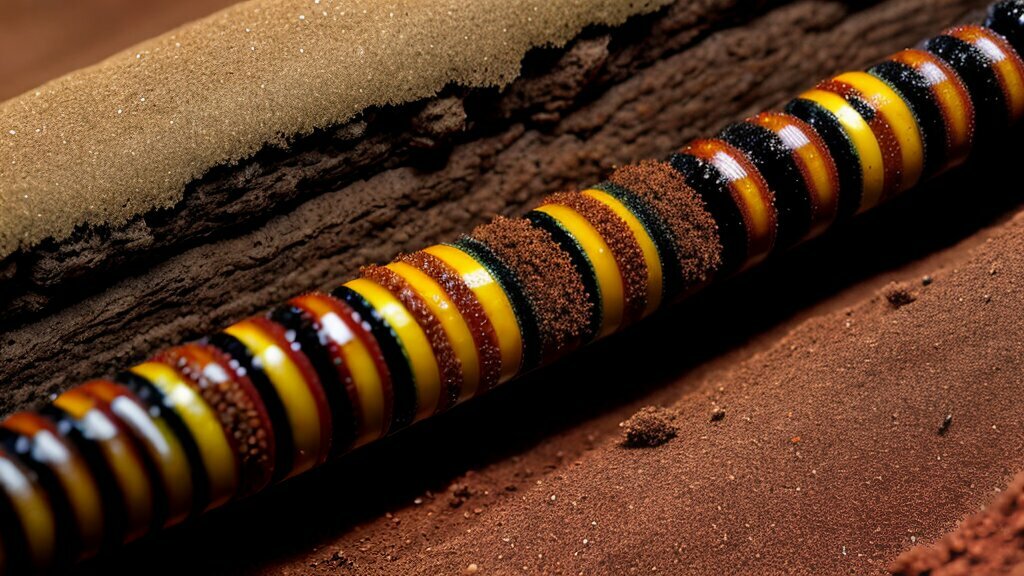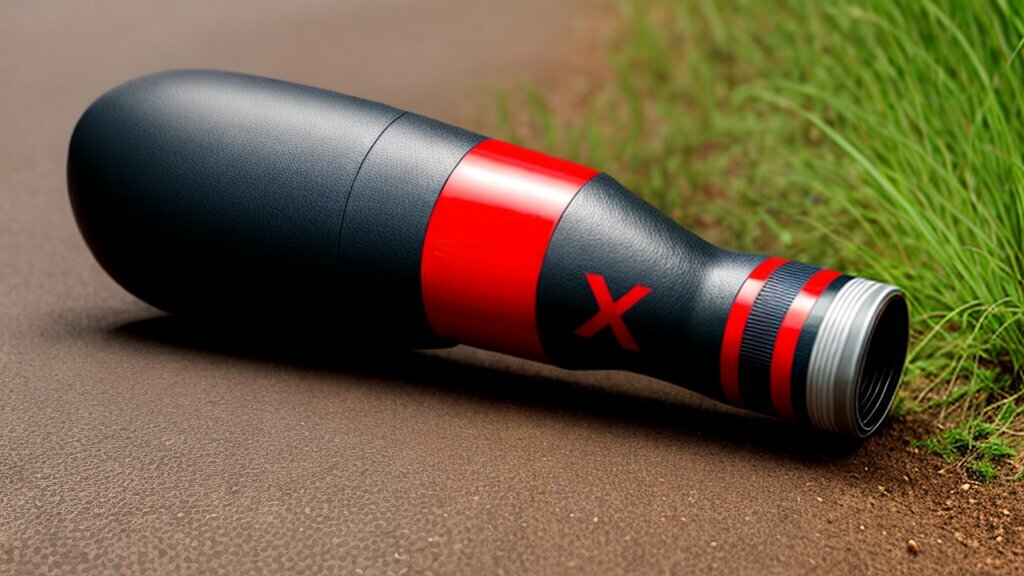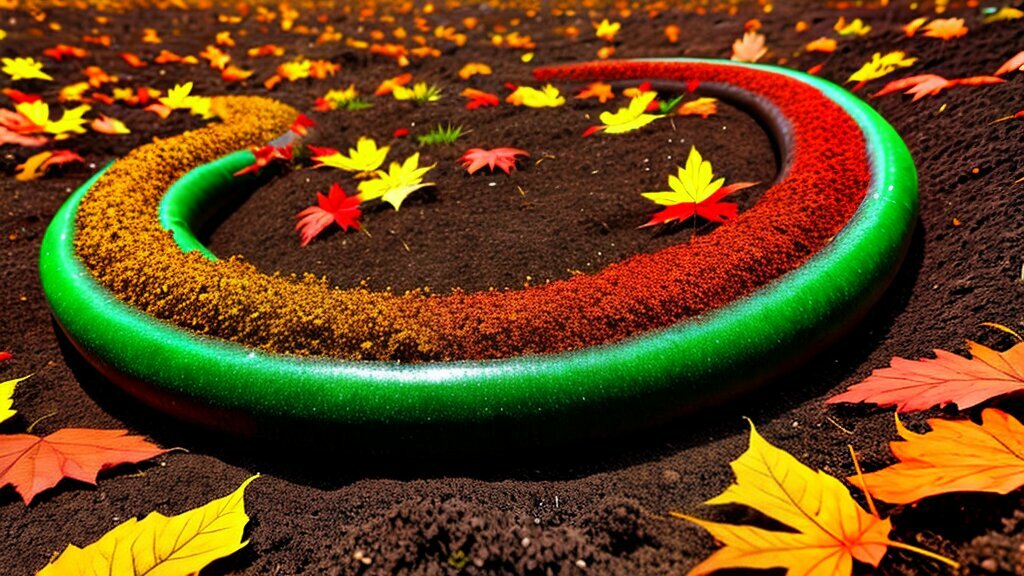Soil centipedes are a common sight in many gardens and outdoor spaces. While many people may find them creepy or unpleasant, others view them as harmless creatures that play an important role in the ecosystem.
However, there are also concerns about the potential risks associated with soil centipedes. Some people wonder if they are poisonous or if they pose a threat to humans and animals.
In this article, we will explore the facts and risks surrounding soil centipedes. We will examine their physical characteristics and habits, discuss the potential dangers they may pose, and provide practical safety measures for handling them. By the end of this article, you will have a better understanding of these fascinating creatures and the role they play in the soil ecosystem.
Key Takeaways
- Soil centipedes are common in many outdoor spaces and play an important role in the soil ecosystem.
- There are concerns about the potential risks associated with soil centipedes, including their venomous nature and the possible health risks they may pose.
- Practical safety measures can help reduce the likelihood of encountering soil centipedes and minimize the risk of bites.
Understanding Soil Centipedes: An Overview
Soil centipedes are a common sight in many outdoor environments, including gardens and forests. These creatures are often misunderstood and viewed as a threat to human health. However, it’s important to understand that not all centipedes pose a danger to humans and animals. In fact, certain species of centipedes can be beneficial to the ecosystem.
Centipedes are arthropods, belonging to the class Chilopoda. They have long, segmented bodies that are usually brown or gray in color. Centipedes can range in size from a few millimeters to over a foot long, depending on the species. They have multiple pairs of legs, with each segment carrying one or two pairs. The number of legs can range from 15 to over 300.
Despite their appearance, most centipedes are not aggressive towards humans and animals. They typically only bite in self-defense, as their venom is primarily used for subduing prey. While some species of centipedes can cause pain and swelling at the site of the bite, the effects are usually short-lived and mild.
It’s important to note that while soil centipedes may not pose a significant threat to humans, they can serve as indicators of soil health and quality. These creatures play an important role in the ecosystem, contributing to nutrient cycling, decomposition, and pest control. By understanding soil centipedes and their role in the environment, we can work towards promoting a healthier and more balanced ecosystem.
Toxicity of Soil Centipedes: Potential Dangers
Soil centipedes are venomous arthropods that use their venom to subdue prey and defend themselves from predators. While not all species are harmful to humans, their bites have been known to cause adverse effects, particularly in people with allergies or sensitivities to insect venom.
Research suggests that soil centipede venom can cause a range of symptoms, including pain, swelling, inflammation, and redness around the bite area. Depending on the species, bites may also result in nausea, vomiting, and headache in some individuals. In rare cases, severe allergic reactions can occur, leading to anaphylaxis and other life-threatening conditions.
While the toxicity of soil centipedes varies between species, it is generally recommended to avoid direct contact with them and seek medical assistance if bitten. Individuals with a history of insect allergies or sensitivities should take extra precautions and seek immediate medical attention if symptoms occur.
It is worth noting that soil centipedes are not aggressive towards humans and will only bite if threatened or provoked. In most cases, bites occur when individuals accidentally come into contact with centipedes while working in the garden, cleaning a basement, or handling firewood.
Note that while soil centipedes may be venomous, they play an important ecological role in the soil ecosystem by controlling pests and decomposing organic matter.
Effects of Soil Centipede Bites: Symptoms and Treatment
Unfortunately, soil centipedes have a venomous bite that can cause discomfort and pain to humans and pets. If you are bitten by a soil centipede, it’s essential to know how to identify the symptoms and take the necessary steps to treat the bite.
The first sign of a centipede bite is usually a sharp, stinging or burning pain in the affected area. The bite may also cause swelling, redness, and inflammation. Other symptoms may include nausea, dizziness, and headache, although these are less common.
If you or someone you know has been bitten by a soil centipede, it’s important to clean the wound immediately with soap and water. Apply a cold compress to reduce swelling and pain. Over-the-counter pain relievers such as acetaminophen or ibuprofen can also be used to ease discomfort.
If the pain and inflammation persist, or if you experience severe symptoms such as difficulty breathing, chest pain, or a rapid heartbeat, seek medical attention immediately. In rare cases, soil centipede bites can cause allergic reactions or other adverse effects that require medical treatment.
Symptoms of Soil Centipede Bites
Here are some common symptoms of soil centipede bites to look out for:
- Sharp, stinging or burning pain
- Swelling and inflammation
- Redness and discoloration around the bite area
- Nausea and vomiting
- Dizziness and headache
- Difficulty breathing (in severe cases)
Treatment for Soil Centipede Bites
If you are bitten by a soil centipede, take the following steps to treat the bite:
- Clean the wound with soap and water
- Apply a cold compress to reduce swelling and pain
- Take over-the-counter pain relievers if necessary
- Seek medical attention if symptoms persist or worsen
Remember, prevention is the best way to avoid soil centipede bites. Follow the precautions outlined in Section 6 to minimize encounters with these venomous pests.
Are Soil Centipedes Venomous? Understanding Their Bite
Soil centipedes are known for their venomous nature. Their venom is primarily used for defense and immobilizing their prey. While not all species of centipedes are venomous, some may pose a threat to humans and pets.
The potency of centipede venom varies among species. Some species, such as the giant centipede, have venom that can cause severe pain, swelling, and other symptoms. Other species, such as the soil centipede, have milder venom that may only cause mild irritation or discomfort.
If you are bitten by a soil centipede, you may experience symptoms such as pain, swelling, and redness at the site of the bite. In some cases, you may also experience numbness or tingling sensations. These symptoms typically subside within a few hours to a few days, but you may need to seek medical attention if they persist or if you experience an allergic reaction.
It is important to note that while soil centipedes are venomous, they generally do not actively seek out humans to bite. Encounters with these creatures are often accidental, and bites usually occur when they feel threatened or cornered.
Precautions for Handling Soil Centipedes: Safety Measures
Although not all soil centipedes are harmful to humans, it is still important to take precautions when handling them. Direct contact with centipedes can lead to painful bites and possible allergic reactions.
Here are some safety measures to follow when encountering soil centipedes:
| Measure | Description |
|---|---|
| Avoid direct contact | Do not handle centipedes with bare skin, especially not with bare hands. |
| Use protective measures | Wear gloves and shoes when working in areas where centipedes may be present. Long sleeves and pants can also provide additional protection. |
| Remove centipedes appropriately | If a centipede is found indoors, do not attempt to catch or kill it with your bare hands. Instead, use a jar or container and slide a piece of paper or cardboard underneath to safely relocate it outside. |
By taking these precautions, you can minimize the risk of encountering a soil centipede and decrease the likelihood of painful bites or allergic reactions.
If you do get bitten by a centipede, it is important to wash the affected area with soap and water and apply a cold compress to reduce swelling. Seek medical attention if symptoms persist or an allergic reaction occurs.
Centipedes in the Soil: Understanding their Ecological Role
Soil centipedes play an essential role in the soil ecosystem, contributing to nutrient cycling, decomposition, and pest control. They are often considered beneficial organisms, helping to maintain the balance of the soil food web.
Centipedes feed on a variety of soil fauna, including insects, earthworms, and other small invertebrates. They are also known to consume plant matter, fungi, and decaying organic material, contributing to the breakdown and recycling of nutrients in the soil.
Furthermore, many species of centipedes are natural predators, actively hunting and feeding on other pests such as termites, cockroaches, and other insects. This makes them important allies in pest control, reducing the need for harmful pesticides and chemicals.
To put it simply, soil centipedes are an essential part of the soil ecosystem, playing a valuable role in maintaining soil health, nutrient cycling, and pest control. Their presence is an indicator of a healthy and balanced ecosystem and should be appreciated as such.
Myth vs. Reality: Debunking Common Beliefs
There are many myths and misconceptions surrounding soil centipedes. It’s important to distinguish fact from fiction to better understand these creatures and the potential risks they pose. Here are some common myths and the reality behind them:
Myth: All centipedes are venomous and dangerous to humans.
Reality: While many centipedes are venomous, not all are harmful to humans. In fact, some species may even be beneficial to have in your garden as they can help control pests.
Myth: Centipedes actively seek out humans to bite.
Reality: Centipedes typically only bite humans in self-defense or if they feel threatened. They are not actively seeking out humans as prey or for any other reasons.
Myth: Soil centipedes are always found in dirty or unsanitary environments.
Reality: Centipedes can be found in many different environments, including clean and well-maintained areas. They are often found in gardens, under rocks, and in other areas where they can find shelter and prey.
By understanding the reality behind these common myths, you can better prepare yourself for any encounters with soil centipedes and take appropriate precautions.
Identifying Soil Centipedes: Common Species
Soil centipedes are a diverse group of arthropods, with over 8000 known species worldwide. While there are many different types of centipedes, the ones commonly found in soil are the Lithobiomorpha and Geophilomorpha families. These centipedes are relatively small, ranging from a few millimeters to several centimeters in length. They are typically brown or grey in color with long, thin bodies and multiple pairs of legs.
Lithobiomorpha centipedes have a flattened body, with long antennae and 15 to 177 pairs of legs. They have sharp, venomous claws and are typically found in moist, shaded areas such as under stones, leaf litter, or in the soil. They can be found in gardens, forests, and other natural habitats.
Geophilomorpha centipedes have longer and narrower bodies than their Lithobiomorpha counterparts. They may have up to 300 pairs of legs, giving them a distinctive “hairy” appearance. They are also found in damp soils, leaf litter, and other similar habitats. They are sometimes called “soil centipedes” due to their affinity for underground habitats.
Both Lithobiomorpha and Geophilomorpha centipedes are harmless to humans, but they can be predators to other soil-dwelling creatures. They play an important role in the ecosystem by helping to control populations of insects, mites, and other arthropods.
Minimizing Encounters: Pest Prevention Tips
If you’re looking to keep soil centipedes out of your home, there are several things you can do to minimize encounters and prevent infestations.
Cleanliness and Moisture Control
One of the best ways to prevent soil centipedes from entering your home is to keep it clean and dry. Centipedes are attracted to moisture and humid environments, so it’s essential to eliminate any sources of water or dampness. Try to keep your basement or crawl space dry, and fix any leaks or plumbing issues as soon as possible. You should also vacuum regularly, especially in areas where centipedes are likely to hide, such as corners and crevices.
Seal Entry Points
Another essential step is to secure your home’s exterior and seal any entry points. Centipedes can enter through tiny cracks and gaps, so it’s essential to inspect your home’s foundation, doors, windows, and vents. Seal these openings with caulk, weather stripping, or mesh screens to prevent centipedes from crawling inside.
Reduce Clutter
Centipedes are typically shy and avoid areas with too much clutter. To minimize encounters, you should keep your home tidy and decluttered. This includes minimizing the number of paper products and boxes you store and disposing of any unnecessary materials. Doing so will make your house less attractive to centipedes, reducing the likelihood of an infestation.
Professional Pest Control
If you’re experiencing a severe centipede infestation, it’s best to seek the help of a professional pest control service. They can identify the root cause of the problem and provide targeted solutions to eliminate the issue. Professional pest control services may use a combination of chemical and non-chemical treatments, including bait stations and insecticides, to manage infestations effectively.
By following these tips, you can minimize encounters with soil centipedes and reduce the likelihood of infestations. Remember to pay attention to areas of your home that are damp or humid and take prompt action if you notice any signs of centipede activity.
Conclusion
In conclusion, soil centipedes may pose a potential risk to humans and pets due to their venomous nature. However, it is important to note that not all species are harmful and some may even have beneficial roles in the soil ecosystem. Understanding how to identify and safely handle soil centipedes can help minimize the likelihood of negative encounters.
It is recommended that individuals take precautions when encountering soil centipedes, such as wearing protective gear and avoiding direct contact. If a bite does occur, appropriate first aid measures should be taken, and medical attention sought if necessary.
By understanding the ecological role of soil centipedes and taking measures to prevent infestations, individuals can promote a healthier and safer environment for themselves and their surroundings. Remember to always seek professional help if experiencing any concerning symptoms or issues related to soil centipedes.
FAQ
Q: Are soil centipedes poisonous?
A: Soil centipedes are not typically poisonous to humans. While they do possess venom, it is generally not strong enough to cause significant harm.
Q: Do soil centipedes pose a threat?
A: Soil centipedes are not considered to be a significant threat to humans. They are more beneficial than harmful, as they help control pest populations in the soil.
Q: Are soil centipedes harmful to humans?
A: Soil centipedes can bite humans, which may cause pain, swelling, and inflammation. However, their bites are usually not serious and can be treated with basic first aid measures.
Q: What are the potential dangers of soil centipedes?
A: Soil centipedes can carry toxins and their bites may cause allergic reactions or adverse effects in some individuals. It is important to exercise caution when handling them.
Q: What are the effects of soil centipede bites?
A: The effects of soil centipede bites may include pain, swelling, and inflammation at the site of the bite. It is recommended to clean the area and apply a cold compress for relief. Seek medical attention if symptoms worsen or persist.
Q: Are soil centipedes venomous?
A: Yes, soil centipedes are venomous. They use their venom for defense and to immobilize prey. However, their venom is generally not potent enough to cause severe harm to humans.
Q: What precautions should be taken when handling soil centipedes?
A: It is advisable to avoid direct contact with soil centipedes and use gloves and shoes when necessary. If the need arises to remove centipedes from indoor spaces, it should be done safely and without causing harm to the centipedes.
Q: What is the ecological role of centipedes in the soil?
A: Centipedes play a vital role in the soil ecosystem. They contribute to nutrient cycling, decomposition, and pest control. They help maintain the balance and health of the soil environment.
Q: What are common myths about soil centipedes?
A: Some common myths about soil centipedes include the belief that all centipedes are venomous or that they actively seek out humans to bite. These myths are not true and it is important to have accurate information about centipedes.
Q: How can soil centipedes be identified?
A: Soil centipedes can be identified by their physical characteristics, such as their size, color, and number of legs. Different species may have distinct features that can help in their identification.
Q: What are some pest prevention tips for minimizing encounters with soil centipedes?
A: To minimize encounters with soil centipedes, it is recommended to keep indoor spaces clean and dry, seal entry points, and reduce moisture levels in basements or crawl spaces. These measures can help prevent infestations and reduce the likelihood of centipedes entering homes.

